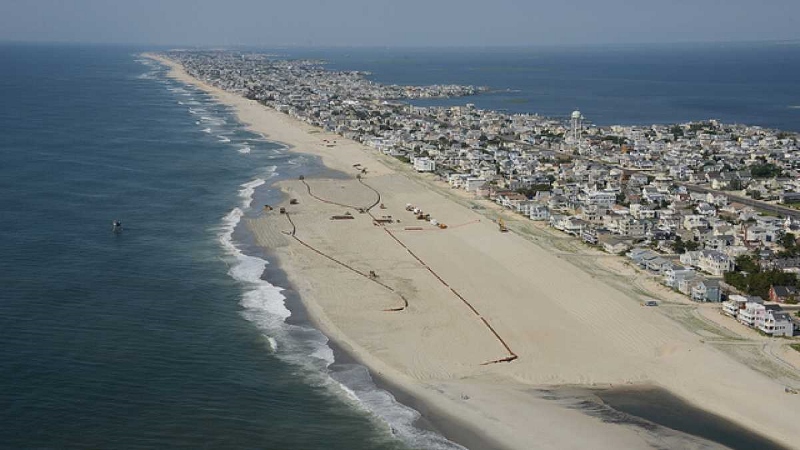The federal government poured 26 million cubic yards of sand and $420 million onto beaches from Rhode Island to Virginia after hurricane Sandy in 2012.
With 40 more shore protection projects in the planning pipeline through the 2030s, the Corps of Engineers could spend billions more in steady work for Great Lakes Dredge & Dock Company, and others among the handful of U.S. contractors equipped to dredge ocean sand deposits and put them on beaches.
“We’re going to need a lot of sand, and we’re going to need a lot of money,” said Lynn Bocamazo, chief of the Corps of Engineers’ Hurricane Sandy Relief Branch. “That’s why we need to prioritize, to decide who’s going to get it.”
Bocamazo spoke in Long Branch, N.J. at this week’s national conference of the American Shore & Beach Preservation Association, the major advocacy group for publicly funded beach replenishment and shoreline protection projects.
Now in its 90th year, the ASBPA is helping its constituent coastal communities get more federal help, pitching the argument that beach projects pay for themselves many times over in tourism dollars and preventing storm damage.
But lurking in the background are tighter federal budgets, plus scientists’ predictions that sea level rise along the most populous parts of the East Coast could be 1’ to 2’ by the 2050s.
“We need to rethink our approach to adaption to risk,” said Bocamazo. That includes prioritizing shore protection needs, and taking a larger regional view across the Corps’ “business lines” to coordinate dredging projects and sediment use for navigation, shore protection and ecosystem restoration, she said.
After Sandy, 25 emergency coastal and flood control projects were completed within three years for $420 million. In an era of constrained budgets, the Sandy emergency funding benefited Northeast projects. Another 19 projects worth $2.5 billion are authorized but not constructed.
“But that will come to an end,” Bocamazo said. Going forward, “we have 40 projects in the North Atlantic Division” over the coming 20 years, she said.
Those would require 140 million cubic yards of sand, delivered through 207 contracts, Bocamazo said. The estimated costs: $2.1 billion to $2.8 billion, plus some $895 million in mobilization costs.
In some coastal and flood-prone communities, buyouts and relocations will be ‘the only realistic way to reduce risks,” Bocamazo said.
During Sandy, engineered beaches and dunes showed their worth in places like New Jersey’s Long Beach Island, where completed sections of a $150 million Corps project withstood the surge. Afterward, the Corps went back with an additional 7 million cubic yards to fill in another 11.5 miles along the barrier beach.
But Sandy did damage to much more expensive urban real estate around New York City. The federal government’s attention – and taxpayers’ money – are being inevitably drawn there.
New York City officials are looking at how to raise bulkheads and other barriers along 26 miles of waterfront, just to prepare for sea level rise and resulting nuisance flooding by mid-century, said Curtis Cravens, head of climate policy and programs for Mayor Bill de Blasio’s office.
Across the Hudson River, New Jersey planners hope to use $380 million in funding from the federal Department of Housing and Urban Development for flood protection projects. Those will go far beyond working at the water’s edge, said David Rosenblatt, an assistant state environmental commissioner.
“Instead of doing perimeter projects…these projects will require infrastructure in the middle of communities,” Rosenblatt said. Along Hoboken’s Hudson River waterfront, designers envision urban park spaces that incorporate flood controls, and New Orleans-like flood gates to protect the city streets.
“I hope we have enough money to do this,” Rosenblatt said. “I expect that we will.”





